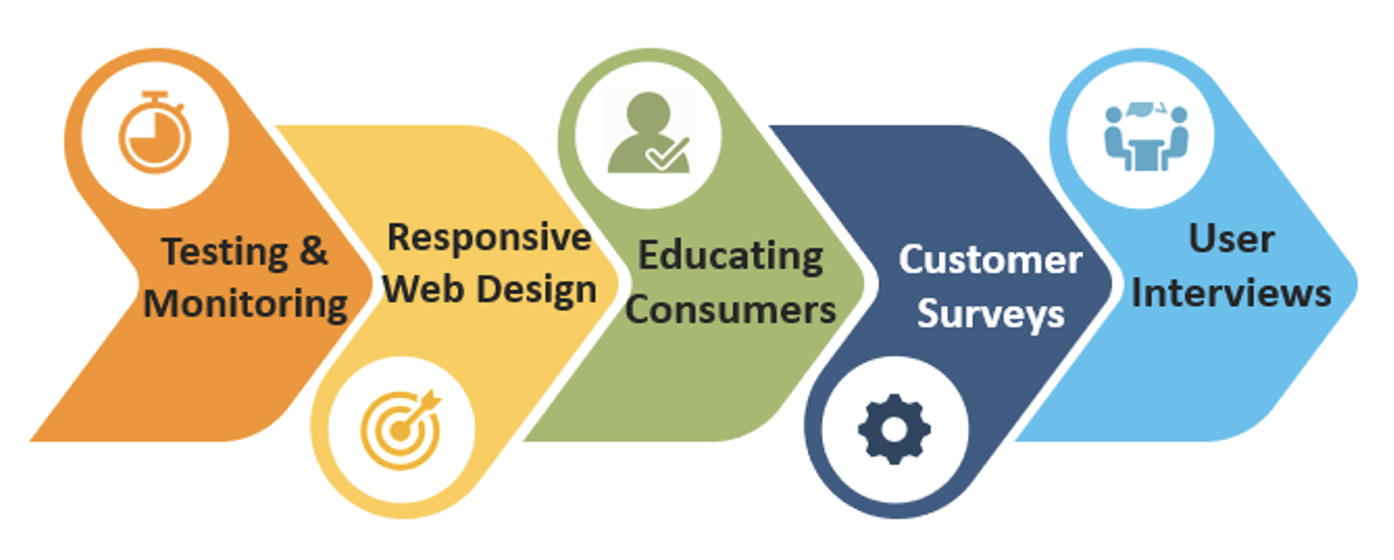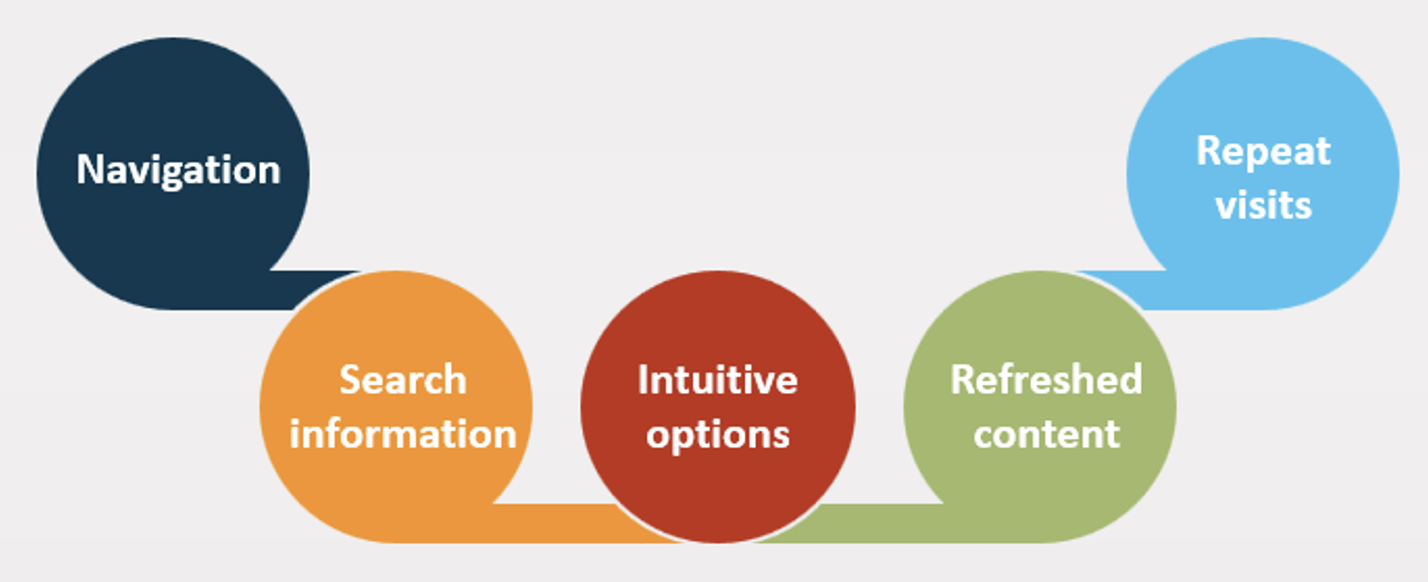A feeling that users have when they use a product, platform, application, system, or service is referred to as user experience. It is a broad term that can refer to anything from how well a user can navigate the product to how simple it is to use, how relevant the content displayed is, and so on. This consumer applications involve the entire design of the acquisition and integration processes, along with branding, design, usability, and function.
User experience is the first most essential aspect of your software product. A well-designed UX can boost traffic and conversion rates by up to 200%. The UX assists you in developing a product or service that is effective, comprehensive, and pleasant.
Excellent customer service can boost KPIs by more than 80%. The only way to set your software application apart from the competition is to have an excellent UX design that will impress even the most seasoned application users.
The UX design of the application enhances the user experience and customer satisfaction, which, in turn, aids in increasing the number of users of the specific application, gaining the consumers’ trust, and encouraging them to use your software. Only 1% of people say eCommerce sites meet their expectations, whereas 90% of users have stopped using an app due to poor performance.
Measuring success, such as the number of buttons clicked, time spent on a page, low bounce rates, faster loading, and so on, can eventually be used to validate decisions. By analyzing user engagement data, you can improve user experience and, as a result, user engagement.
Why User Experience is essential?
The success of a software product platform or application depends on the user’s experience. The businesses that invest in UX will benefit from the lower cost of customer acquisition, fewer support costs, higher customer retention, and an increase in the market share.
A good UX experience connects consumers to products, platforms, software applications, and services that meet their demands as well as company objectives, aiding you in building a useful, complete, and pleasant product or service. As a result, audience engagement, conversions, and more profits.
Considering the below points will help enhance the User Experience (UX):

- Testing and Monitoring: Observe people using our website in real-time, listen to what they have to say about it, and pay attention to the metrics on your site. These methods help us to understand where the people facing the problems are, their thoughts on the site, and how they are performing statistically.
- Using Responsive Web Design: Design that make reading, navigation easier on a wide range of devices (from desktop computer monitors to mobile phones) and offer the best possible viewing experience (easy reading and navigating with the least amount of resizing, panning, and scrolling).
- Educating Consumers: Investing time and effort in consumer education helps to research user behaviour. Make sure that the user understands how the product will benefit them. Provide a basic understanding of how things function, as well as best practices to apply and employ.
- Using customer surveys: Survey is the best idea when you would like to find out more about the users and their needs, The biggest benefit of a UX survey is that it allows you to ask real visitors questions throughout their visit. You can learn a lot about who your customers are and why they’re there by including a survey in your product.
- Conducting user interviews: User interviews are a great tool for identifying new opportunities and creating ideas during the discovery phase, and they are one of the most customizable methodologies. These conversations help businesses to figure out how to categorize their users and analyze what value they get out of the service.
Some important elements of User Experience
The user experience is the most important factor playing a vital role in the success or failure of products in the marketplace. In today’s digital world, speed of a website or app is crucially significant.
The user will not want to sit tight for more than 8 seconds before your website or even till the operating system loads. If your loading time exceeds 8 seconds, your user will most likely become irritated and leave. Even Microsoft and Google prioritize the speed of their operating systems and websites, respectively.
Including speed, the points below play a vital role:

- Navigation: People tend to utilize navigation over search since clicking on links is easier and faster. People have become increasingly reliant on navigation to assist them to find what they are looking for in recent years. Although few websites have navigation, most visitors struggle to find the information they seek.
- Search information: Providing better searchability to your websites, software, or apps will encourage the users to interact more. It’s just like having a chat with a friend: you tell it what you’re looking for, and it delivers you the information you need.
- Intuitive options: The user likes the ease and comfort of finding more information with fewer clicks, which allows them to make quick judgments. You can’t think about other strategies for retaining visitors until you’ve nailed this one.
- Refreshed content: Refreshing the content on a regular basis to keep viewers or readers interested. If people find the same item on your website, they are less inclined to return; however, if they discover new products or information, they will.
- Repeat visits: The first visit measures credibility, subsequent visits may entail more complex interactions and, in some cases, conversion events, which may take weeks or months to occur after the initial visit. The best method to grow and thrive online is by increasing traffic to the website.
Poor user experience: that might ruin your software application.
Learning, observing, ideating, iterating, and testing are all necessary steps in creating a great user experience. It’s all about turning bad experiences into good ones.
Although every designer is aware of the fundamental principles of UX design, the following are some of the most common errors that can lead to the software platform’s downfall:
- Not targeting the audience: Most designers put a lot of information on the internet without thinking about whom they’re writing for. They write for themselves rather than for the end-user. Most of the data is available in general, the user must search through every piece of content to discover what they require.
- Sticking to old layouts: Using old layouts to display improved ideas rather than updating fresh information or layouts can make users unhappy. A good user experience is expressed in a good layout design that corresponds to objectives. As a result, we can claim that a good layout helps the user find what he wants.
- Irrelevant information: Overloading irrelevant information, which the user does not require, may lead to confusion, and leave the user in a dilemma. It may impede the judging process, resulting in the user making the wrong choice.
- Proper information experience: Connects all the application’s components so that users may travel through it smoothly and confidently, thereby improving the overall accessibility of your application, which will lead to end-user happiness.
- Lack of user journeys: Improper user journeys can frustrate the users and hence leading to exits from the website forever. User journeys are the actions that users take to obtain their desired information on the website. Whether it’s buying a product, looking for store hours, or opening a bank account. Before creating a realistic user journey, users must be identified via a user profiling technique.
- Information architecture: Users may be discouraged from accessing the page due to unstructured information architecture. It can perplex and prevent you from realizing the purpose of visiting a website. It can make them doubt their next steps. Great UX architecture prioritizes the key-features first, creates the main navigation next, and then explores the product features. Which makes it easy for users to find what they are looking for through clear navigation.
How Impelsys can help?
Impelsys has garnered extensive experience working with global Enterprises across Industry verticals on User Experience (UX) designs for web and mobile app development. Impelsys Product Engineering and Application Management Services Teams provide tailor-made solutions for organizations that desire to enhance their user experience design aspects that delight and thrive. Our Teams assist in building the User Experience Strategy, Product Prototyping, Design Sprints, Usability Testing & Validation that can help Enterprises develop new products, platforms, applications or re-invent the existing products, platforms or services for greater impact and efficiency.
Connect with us:
Looking for an Expert Team that can help you bring your vision to life? That’s exactly what our team of ideators, business consultants, architects and engineers have done for our clients over the years. Leveraging over 20 years of rich technology experience, Impelsys is diligently creating technology solutions with our tried-and-tested digital transformation approach and application engineering expertise to drive business growth across industry verticals. To learn more, visit Impelsys or write to us at marketing@impelsys.com to get started.
Authored by –
